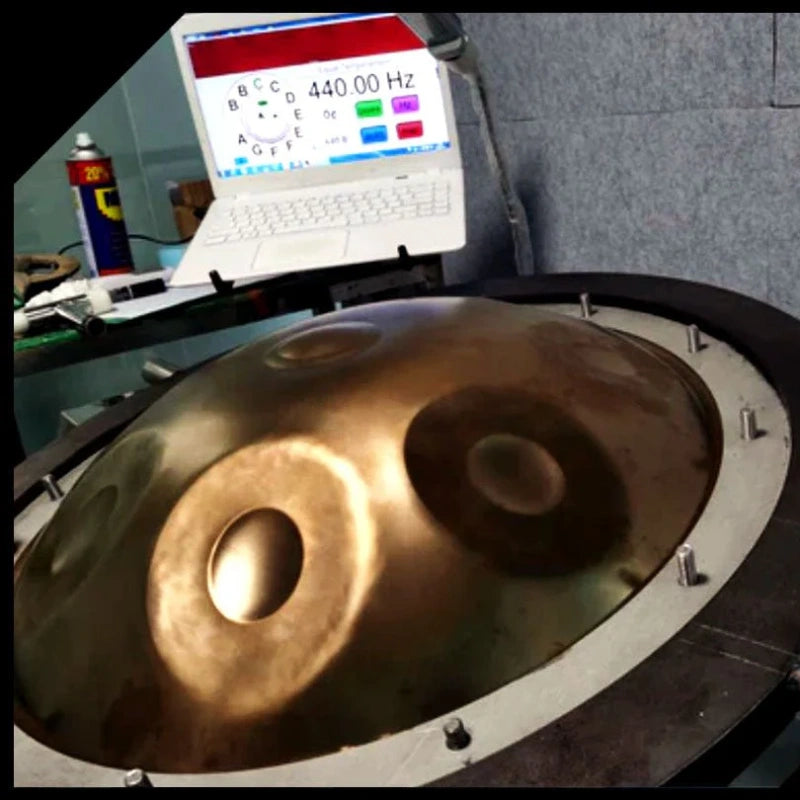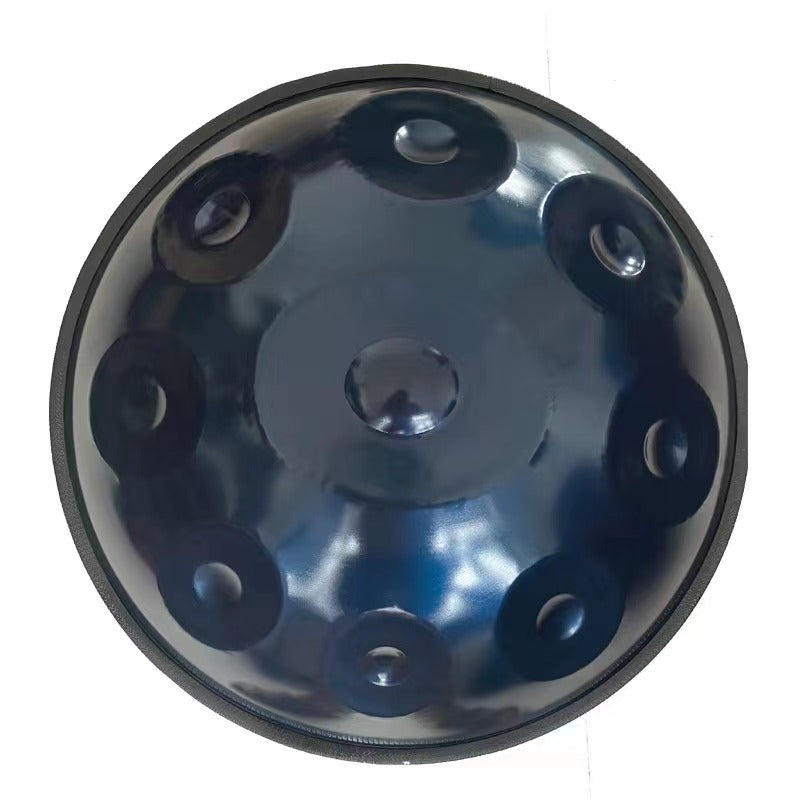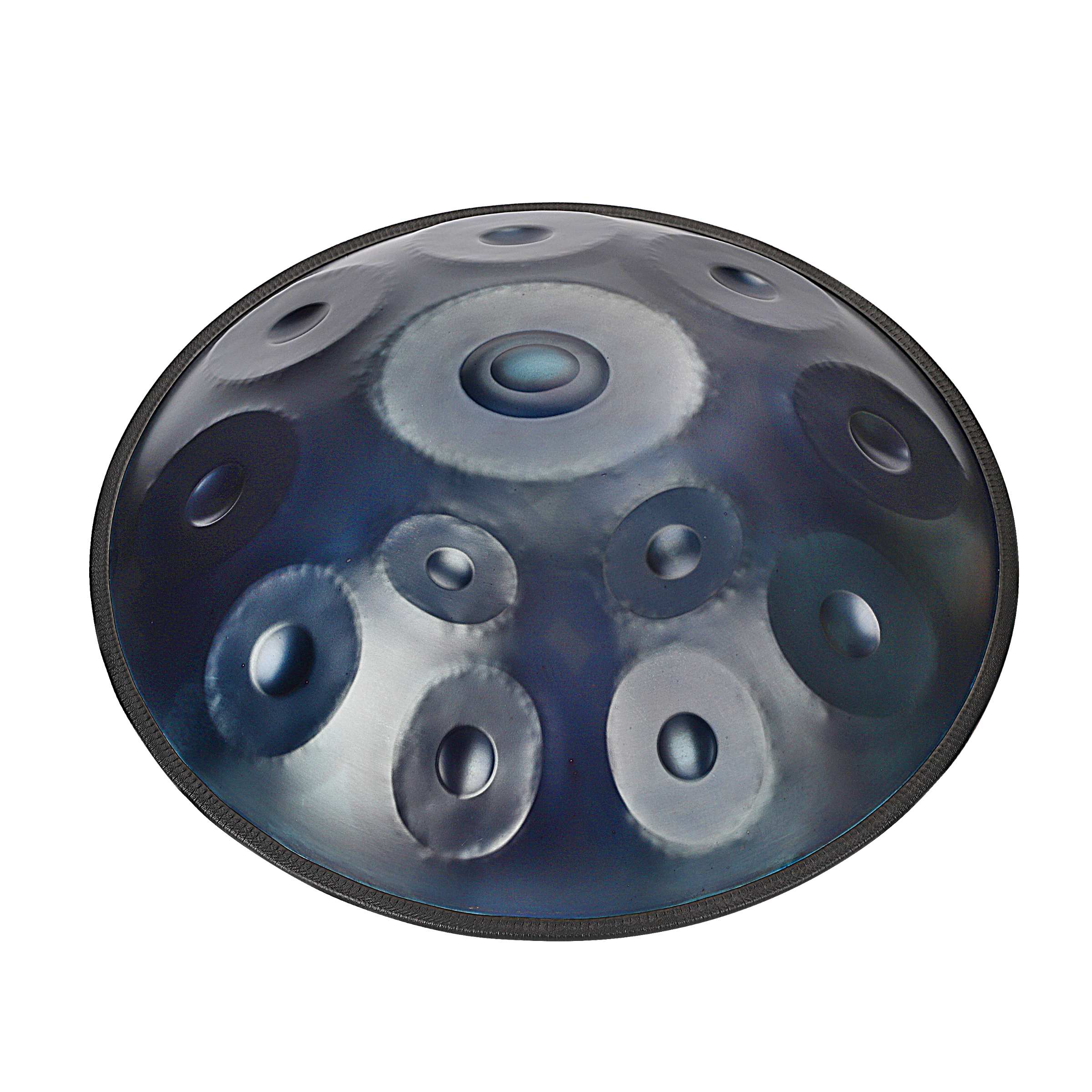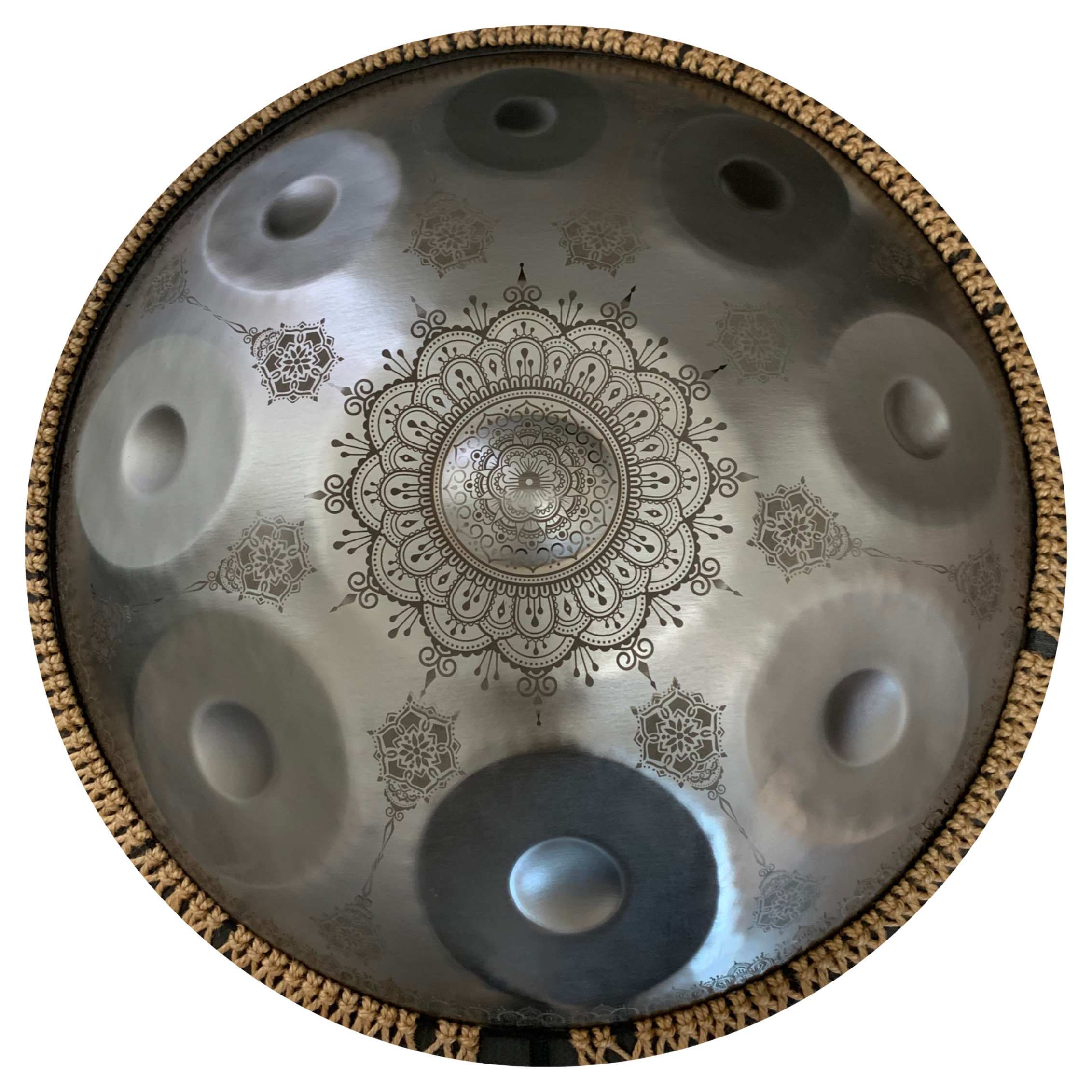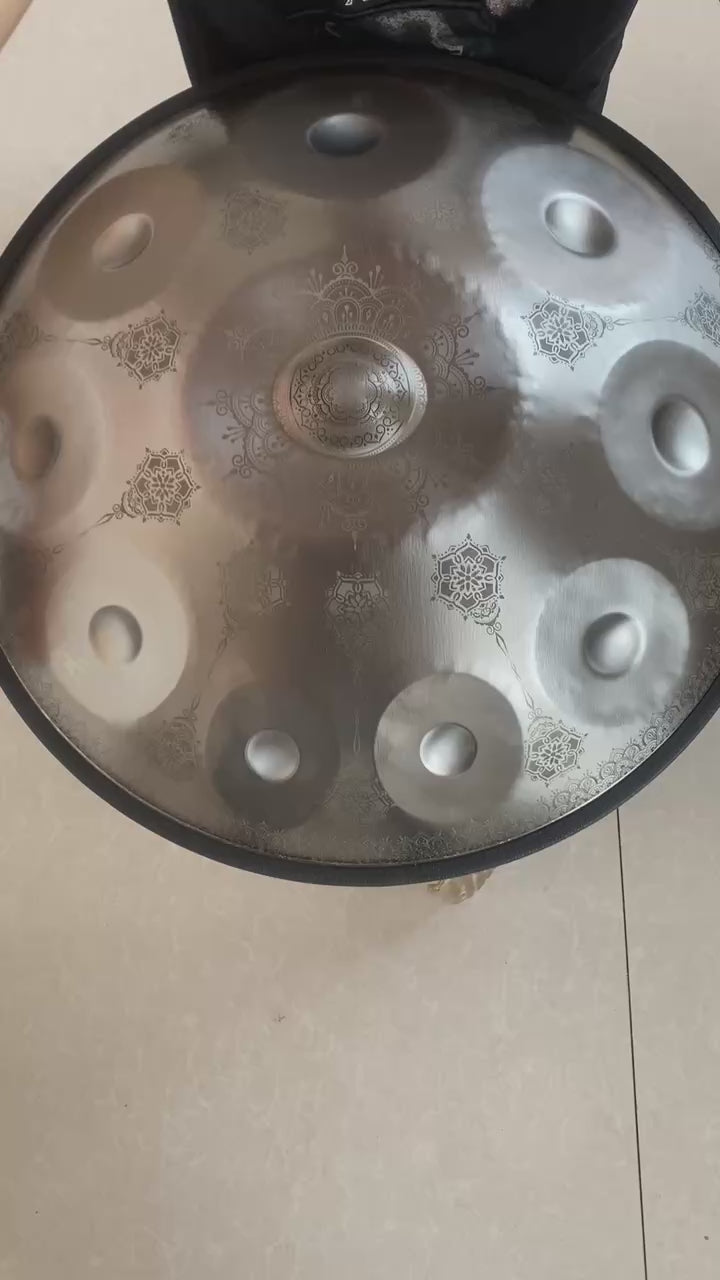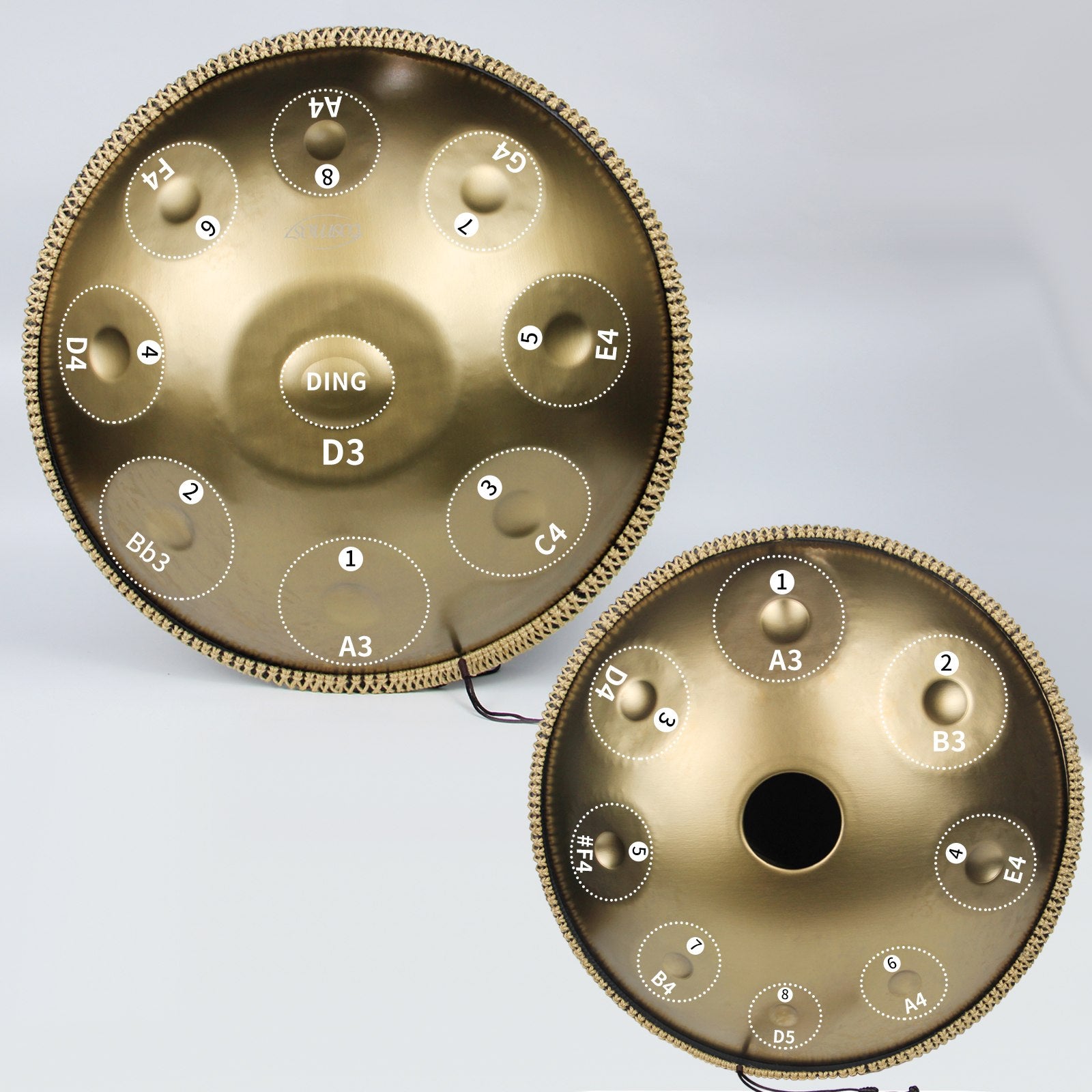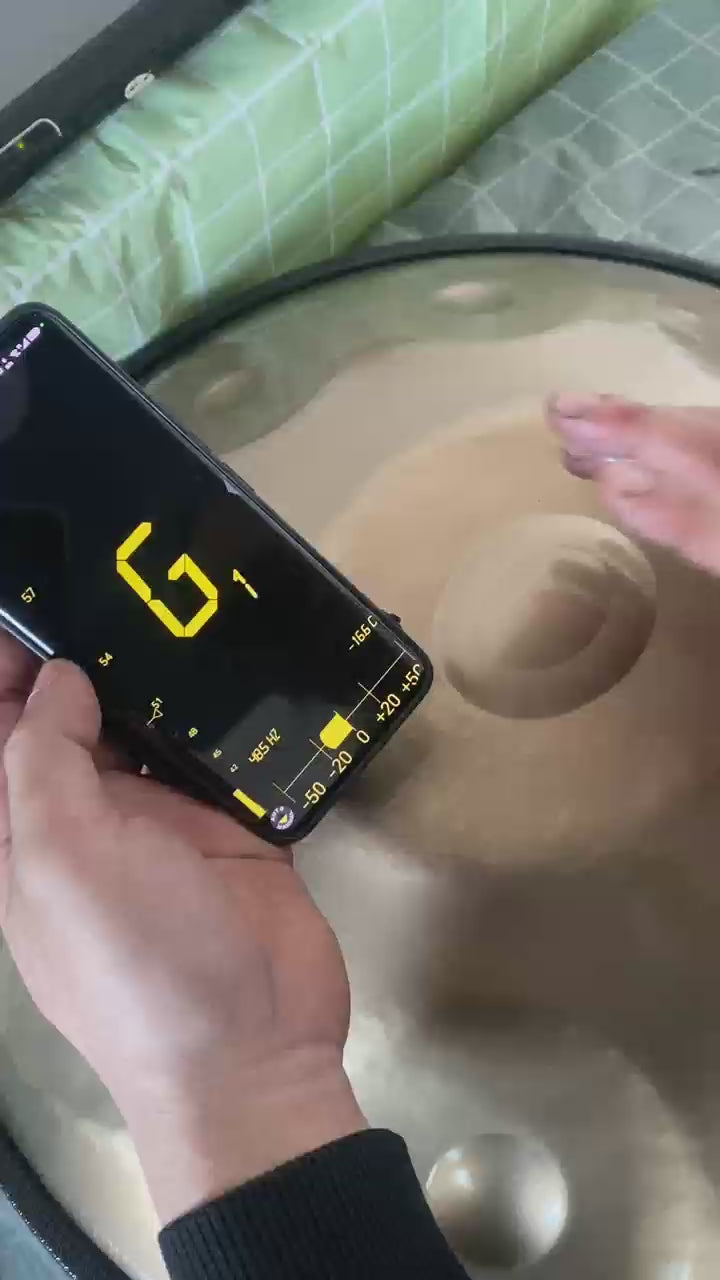This quick guide will help you to get started with the unique handpan. Here, you will find beginner’s tips, learning resources, and advice on the handpan.

In this article, we will walk you through the basic steps of using the handpan. You will discover essential approaches, helpful resources, and ways to maintain your motivation as you practice. We will also give you tips on finding the right instrument, especially if you have been eyeing a handpan drum for sale. After reading this article, you will know what to anticipate as a novice and how to enjoy your learning process. All set to delve into the magical world of the handpan? Now, let’s get going!
Is the Handpan Hard to Learn?
The handpan is one of those instruments that, at first glance, might seem tricky to master. Its unique design and otherworldly sound can be intimidating. The good news is that learning to play a handpan is not as difficult as it may seem. It is quite approachable for a lot of beginners.
The handpan’s simple design makes it easier to use, among other reasons. The notes of a handpan are organized harmoniously, in contrast to a piano or guitar, where each note is set in a particular order. They all sound well together, so you should not be too concerned about hitting the wrong note! Even on your first attempt, you can begin creating beautiful tunes thanks to this harmonizing design.
Nevertheless, there is a learning curve. Control over your strikes, rhythm, and coordination is necessary when using a handpan. A smooth and resonant tone can only be produced by practicing appropriate techniques, such as using the soft pads of your fingers instead of hitting too forcefully. It takes time to develop sensitivity to the instrument and muscle memory. You can quickly go from creating primary rhythms to creating lovely, flowing melodies with the correct strategy.
Mastering the Basics to Play Handpan
This guide will give you a simplified way to begin your musical adventure if you are keen to learn the fundamentals of playing the handpan.
1.Get to Know the Handpan
You must become familiar with the handpan before you begin to play. This unusual instrument is available in various sizes, shapes, and tunings, each producing a distinctive soundtrack. Explore the instrument by tapping multiple parts and observing how the tones alter. Observe how each note sounds and relates to other pitches. To get an ear for the distinct melodic possibilities and tonal characteristics of the handpan, listen to several different handpan performances and recordings.
If you are still searching for the ideal instrument, look for a quality handpan for sale that suits your demands.
2.Hand Positioning and Striking
The cornerstone of proficient handpan playing is hand placement. Keeping your fingers loose and slightly bent, place your hands lightly on the surface to begin. With your fingers poised to hit the instrument, your palms should hover above it. Hitting using the soft pads of your fingers instead of the tips or knuckles is the secret to producing a pleasing sound.

Using different hand parts to produce distinct sounds is another aspect of proper striking. Higher-pitched, more delicate notes are usually played with the fingers, whereas deeper, resonant tones can be played with the palms or thumbs. You may use your handpan to produce a wide range of textures and tones by experimenting with striking methods.
3.Start with Easy Scales
A solid foundation on the handpan can be achieved by beginning with simple scales. Usually, a handpan is tuned to a particular scale, such as D minor or C major. These scales consist of a range of notes that, when performed together, provide a pleasant sound. Concentrating on a single scale can facilitate learning for newbies.
Start by becoming familiar with the note layout. On the handpan, every note is arranged around the lowest note, or central “ding.” If you start with simple scales, you will develop confidence and be better equipped to experiment with more intricate patterns and variations later.
4.Creating Rhythms
Creating rhythms on handpan is both exciting and essential. Start with easy patterns to gain experience and confidence. Use one hand to tap the basic beat, then switch to the other. Strive for a consistent beat, such as one tap every second. This aids in gaining a feel for the instrument and its response.
Try out more intricate rhythms once you are at ease with simpler ones. Add pauses to produce a syncopated effect between tapping. You may add extra passion to your rhythm by using this variant. Adjust the force of your strikes as well. Firmer taps produce louder notes, whereas lighter taps produce softer sounds. Try experimenting with these dynamics to give your rhythm more depth.
Next, experiment with different note combinations. To create a pattern, try tapping several notes in succession. A rhythmic melody can be produced by blending different beats and notes.
5.Building Muscle Memory
Building muscle memory is crucial for mastering the handpan. Practice repeatedly is a vital step. When you hit the notes, concentrate on being consistent. Your fingers must become proficient in precise movements to make the correct sound. It needs patience and time to accomplish this.
Start by working on primary rhythms. Till they seem natural, keep doing them. Your hands will recall the patterns more as you practice. You can play more naturally and with less mental strain as a result.
Maintaining consistency is essential. Regular practice helps to strengthen muscle memory. Practice sessions that are brief and frequent are more productive than those that are lengthy and uncommon. This keeps your hands and mind engaged without causing fatigue.
6.Record and Evaluate Your Progress
Recording your practice sessions is a valuable tool for improvement. It enables you to hear your playing from a different viewpoint. Spend some time listening to your playbacks after recording. Examine your music’s general flow, the fluidity of your rhythms, and the clarity of your notes. Do you come across as hesitant or inconsistent? Write down these moments. They are essential for determining what has to be done.
Examining your growth also entails tracking changes in recordings over time. Compare the more recent sessions with the ones you listened to earlier. Note any progress as well as any areas that still require work. You may observe how your skills have changed and where you might need to put more effort by comparing them.
Tips for the Beginners to Play Handpan
The following tips and tricks will help novices develop and hone skills and strategies and improve their handpan playing:
1.Prepare Numbered Note Stickers
To get the tone fields in a position suited for performance, move the handpan before you start playing. A3 and Bb3, the two largest low-tone fields, should be lined up before you.
Step for Applying Numbered Stickers That Match the Tone Fields
For novices, here is the D minor scale with ten notes as an example:
- The note sticker “D” corresponds to the “Ding” (D3) tone field.
- The note sticker “1” corresponds to the “A3” tone field.
- The note sticker “2” corresponds to the “Bb3” tone field.
- The note sticker “3” corresponds to the “C4” tone field.
- The note sticker “4” corresponds to the “D4” tone field.
- The note sticker “5” corresponds to the “E4” tone field.
- The note sticker “6” corresponds to the “F4” tone field.
- The note sticker “7” corresponds to the “G4” tone field.
- The note sticker “8” corresponds to the “A4” tone field.
- The note sticker “9” corresponds to the “C5” tone field.

For comfort and efficient playing, handpan positioning and height adjustment are essential. Sitting cross-legged, place the handpan flat on your legs to play while seated. This gives you a straight line of touch with the instrument, giving you stability and convenient access to every note.

Alternatively, put the instrument gently on the stand and tightly secure it if you are using a handpan stand. Use a suitable stool to get the correct playing height if the stand is less than 60 cm. On the other hand, it is advised to stand when playing if the stand is higher than 95 cm. This standing position accommodates the increased height of the stand, allowing you to play more efficiently and without stressing.

For novices, we advise beginning with simple index finger techniques. Use the fingertip, the most flexible portion of your index finger, to start. The handpan’s rich tone fields are best struck with light, accurate strokes in this location. With continued use, your index finger will grow supple and adapt to the handpan's surface. This method will feel more natural the more you use it.
Your finger’s control and mastery will get better with time. You will see an increase in the responsiveness and intuition of your strikes. It will be simpler to create clear, harmonic sounds as a result.
You must warm up before beginning your handpan practice. It relieves pressure and gets your hands and fingers ready for play. To prepare and relax your muscles, start with easy workouts.
You can use a hand-damping technique to produce a muted or percussive effect by gently resting your palm on multiple notes. Covering a portion of the handpan allows you to reduce the entire sound by hand damping instead of instantly silencing individual notes as in hand muting.
Gain mastery of dynamics (volume) to enhance your playing's depth.
You must use soft strikes to add complexity and nuance to your handpan playing. To practice this method, try for a soft and controlled approach when tapping the notes, using a gentle touch. The intention is to create a smooth, reflective tone that can evoke tenderness or reflection.
Accentuated strikes are notes that are struck harder to emphasize and draw attention to particular beats or phrases. This is an essential method to infuse your performance with vitality and dynamic contrast. Choose particular notes or beats and strike them harder than the sounds around them to practice emphasized strikes.
Gradual dynamics is a technique for producing a dynamic range in your performance by gradually raising or lowering the volume of your notes. Practice playing notes that gradually increase in volume—beginning softly and developing to a louder sound—to learn more about this strategy. On the other hand, try gradually lowering the level from a loud to a quieter note. This steady shift in dynamics facilitates more expressive playing and aids in expressing feelings of tension and release.
Conclusion
Playing the handpan is a thrilling adventure that requires creativity and exploration. Learning the fundamentals, experimenting with striking techniques, and paying attention to dynamics can make you realize how fulfilling and pleasurable it is to create beautiful music.
Watch out for handpan sales if they motivate you to begin playing the handpan or advance your skill. Selecting the appropriate tool can significantly impact your learning journey.

